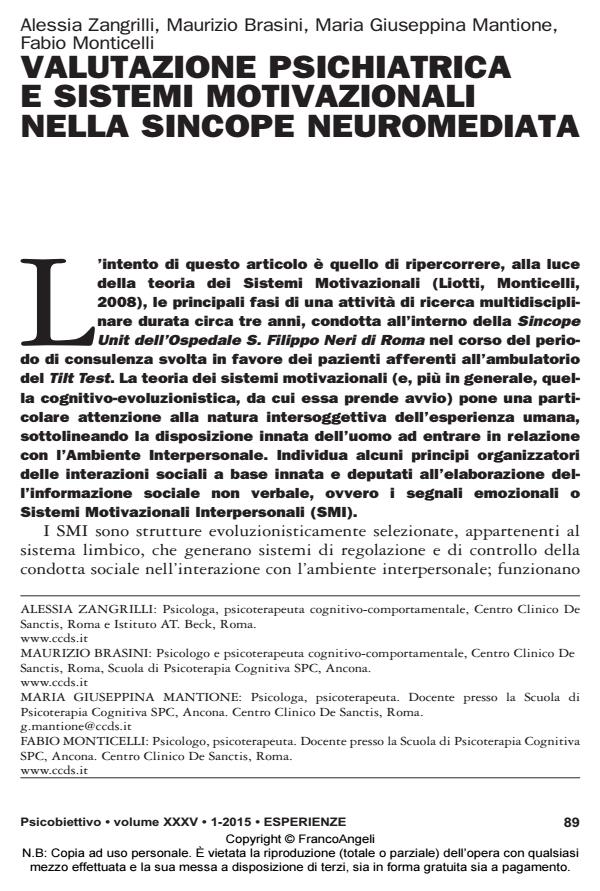The neurally mediated syncope: a psychiatric evaluation and motivational systems
Journal title PSICOBIETTIVO
Author/s Alessia Zangrilli, Maurizio Brasini, Maria Giuseppina Mantione, Fabio Monticelli
Publishing Year 2015 Issue 2015/1
Language Italian Pages 19 P. 89-107 File size 138 KB
DOI 10.3280/PSOB2015-001006
DOI is like a bar code for intellectual property: to have more infomation
click here
Below, you can see the article first page
If you want to buy this article in PDF format, you can do it, following the instructions to buy download credits

FrancoAngeli is member of Publishers International Linking Association, Inc (PILA), a not-for-profit association which run the CrossRef service enabling links to and from online scholarly content.
Three studies were conducted stemming from the hypothesis that the neuromediated syncope is rooted into a somatoform dissociative psychopathologic process. The first study was aimed at finding a linkage between a developmental history of early traumatic experiences, dissociative symptoms, and the presence of vasovagal syncope in a sample of 61 patients. In the second study, a psychiatric assessment of 31 patients suffering from vasovagal syncope was conducted, with a particular focus on the ability to identify one’s owns emotions (alexithymia). Finally, the motivational structure of 30 patients suffering from vasovagal syncope was assessed with the AIMIT method, in order to test the hypothesis that in such patients the focus on their somatic symptoms may become a way to compensate for an underlying tendence towards a dissociative breakdown. Pur preliminary seem to confirm the aforementioned hypothesis.
Keywords: Interpersonal Motivational Systems (ISM); neuromediated syncope; dissociation; alexithymia.
Alessia Zangrilli, Maurizio Brasini, Maria Giuseppina Mantione, Fabio Monticelli, valutazione psichiatrica e sistemi motivazionali nella sincope neuromediata in "PSICOBIETTIVO" 1/2015, pp 89-107, DOI: 10.3280/PSOB2015-001006